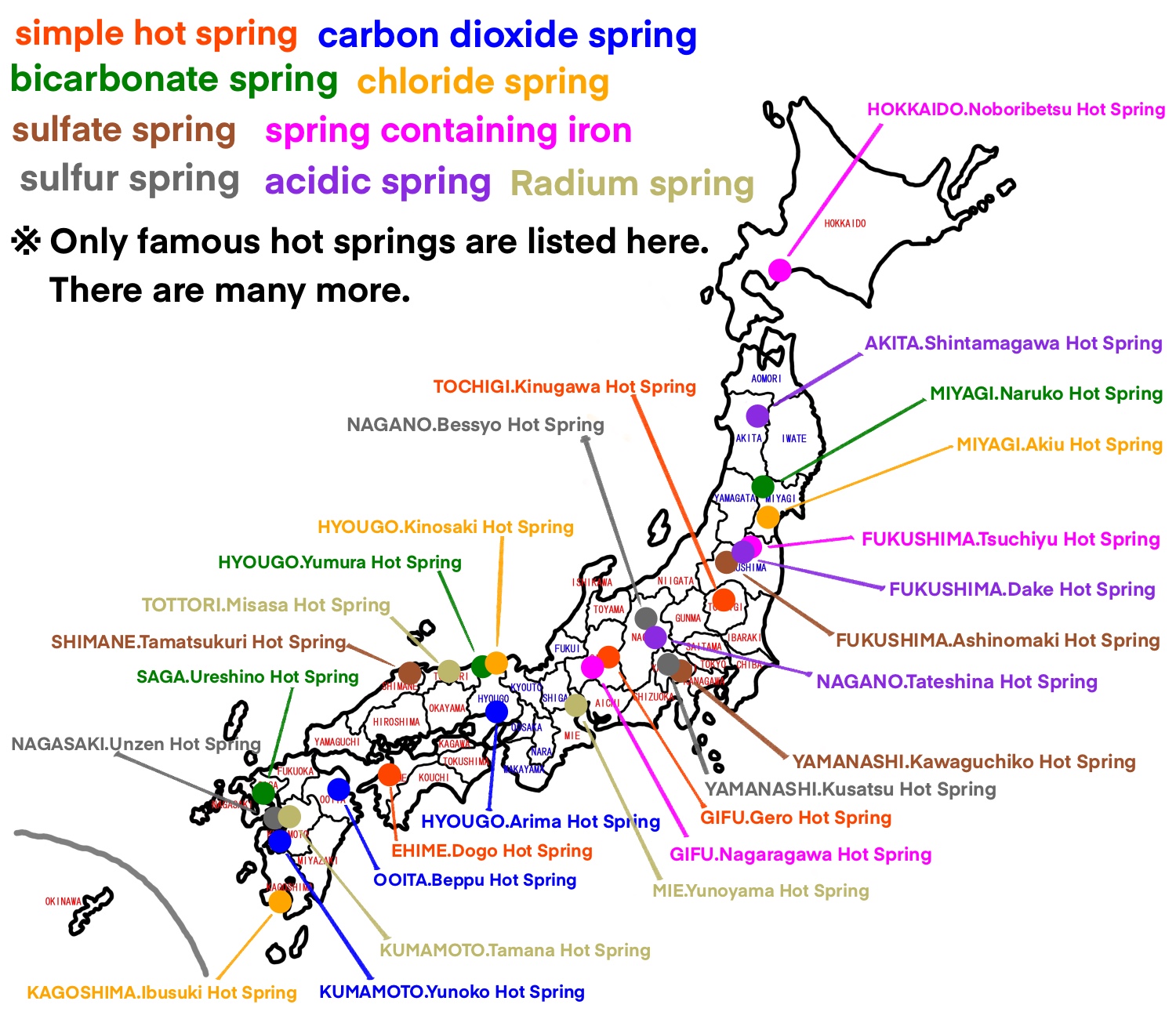memo20-03-02
Knowledge about Japan
hot spring
hot-spring cure
If you want to see the image at full size,
save it and see it.
(Confirmed with google chrome)
Today, Japan's hot spring areas are treated as tourist attractions.
Originally it was a place to do TOJI (hot-spring cure).
The TOJI (hot-spring cure) has been recorded about 1300 years ago.
At first it was only done by a few people, such as those in power.
TOJI (hot-spring cure) is a treatment for illnesses using the effects of hot springs.
Bathing in hot springs can enhance the natural healing power of the human body.
This is the essence of TOJI (hot-spring cure).

TOJI (hot-spring cure) is a medically recognized medical treatment that has existed in Japan for centuries.
Therefore, if you want to do a TOJI (hot-spring cure), you need to find out in advance where the hot springs are located and how to bathe.Talk to your doctor.
TOJI (hot-spring cure) can make things worse if you do it on your own. Caution.
There are many different types of hot springs, and each has its own benefits.
The benefits of simple hot springs are recovery from fatigue, neuralgia, muscle pain and stiff shoulders.
The simple hot spring water is clear and colorless with no odor and is generally easy to get into.
The carbon dioxide spring is effective against high blood pressure, arteriosclerosis, cuts and burns.
It is a hot spring with carbon dioxide gas dissolved in it.
It has the characteristic of promoting blood circulation.
The bicarbonate spring is effective for cuts, burns, chronic skin diseases and beautiful skin.
The bicarbonate of soda spring is popular among women because it has a smooth, slippery feel to it and makes the skin feel smooth, and is also known as a "beauty spa".
When consumed, it can help with diabetes and liver disease.
Don't drink too much!
The chloride spring is effective in treating cold sores, cuts, burns and joint pains.
The high salt content of the chloride spring has a high heat retention effect and prevents the body from getting cold.
The sulfate spring is effective for arteriosclerosis, cuts, burns and chronic skin diseases.
It is one of the few hot springs in Japan. It is similar to a simple hot spring.
It has the ability to send more oxygen to the blood and has the effect of preventing arteriosclerosis and retaining heat.
The spring containing iron is effective for neuralgia, rheumatism, wounds and women's diseases.
The source of the hot spring is clear and colorless, but its color changes as it is exposed to air and oxidizes.
Drinking tea or coffee after drinking the hot spring can cause the inside of your mouth and teeth to turn black.
The sulfur spring is effective for rheumatism, dyskinesia, frostbite and wounds.
It is a hot spring that has a warming effect. It is called "Beauty's hot water" because it is gentle on the skin and has a beautiful skin effect.
If you bathe while wearing metal accessories, the metal will corrode and turn black.
The acidic spring is effective in treating glandular diseases, neuralgia, gastrointestinal diseases and skin diseases.
It is effective against athlete's foot due to its strong acidity and high bactericidal effect.
Bathing can be irritating to the skin.
If you have any discomfort, please rinse the hot spring with fresh water after taking a bath.
Radium springs are effective in treating gout, arterial sclerosis, hypertension and chronic skin diseases.
This is the only hot spring with a gout remedy in its bathing effect.
It has a wide range of efficacy.
This type of hot spring is rarely found in European countries, and is more common in Japan and the Pacific Rim area.

#hot spring
#TOJI
#hot spring cure
#simple hot spring
#carbon dioxide spring
#bicarbonate spring
#chloride spring
#sulfate spring
#spring containing iron
#sulfur spring
#acidic spring
#Radium spring